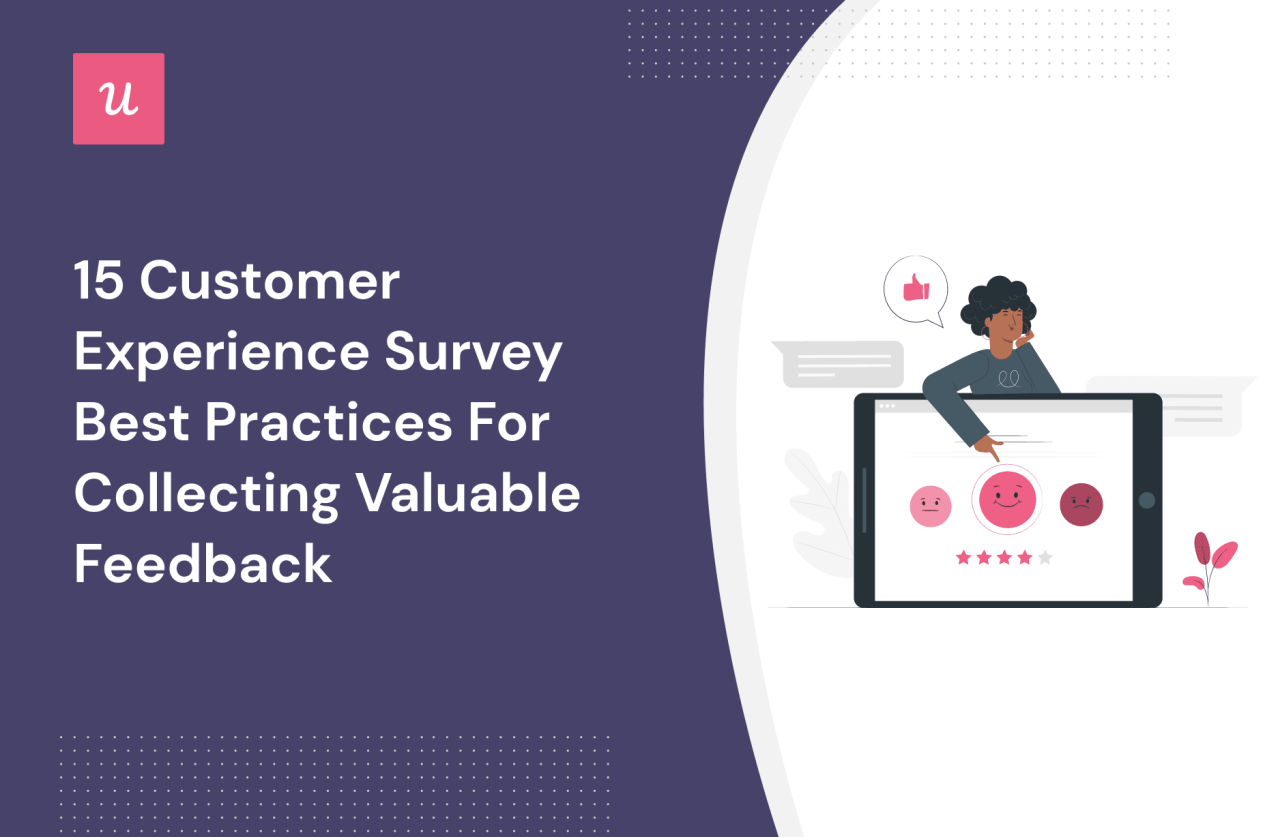Diving into Best Practices for Customer Surveys, this intro sets the stage for an exciting exploration of feedback gathering, product improvement, and business success. Get ready to uncover the secrets of effective customer surveys!
Introduction to Customer Surveys
Customer surveys are like the VIP pass to understanding what’s really going on in your business. They’re the golden ticket to getting feedback straight from the source – your customers. By asking the right questions and listening to what they have to say, you can uncover valuable insights that can help take your products and services to the next level.
Importance of Customer Surveys, Best Practices for Customer Surveys
Customer surveys are not just about collecting feedback for the sake of it. They play a crucial role in improving products and services based on real customer experiences and preferences. By analyzing survey responses, businesses can identify areas for improvement, address customer pain points, and even discover new opportunities for innovation.
- Customer satisfaction: Surveys can gauge how satisfied customers are with your products or services, helping you measure loyalty and identify areas for improvement.
- Product development: Feedback from surveys can provide valuable insights into what customers like or dislike about your offerings, guiding future product development initiatives.
- Brand reputation: By listening to customer feedback and acting on it, businesses can build a positive reputation and foster long-lasting relationships with their customer base.
Businesses Benefiting from Customer Surveys
Numerous businesses have reaped the rewards of conducting customer surveys. For example, Amazon constantly gathers feedback through customer surveys to enhance its online shopping experience and tailor product recommendations. Similarly, Starbucks uses surveys to collect customer preferences and improve its menu offerings, leading to increased customer satisfaction and loyalty.
Designing Effective Surveys

Creating a well-designed survey is crucial to gathering accurate and valuable feedback from your customers. Here are some tips to help you design effective surveys:
Clear and Concise Survey Questions
- Avoid using technical jargon or complicated language that could confuse respondents.
- Keep questions short and to the point to maintain respondent engagement.
- Use simple language and structure questions in a way that is easy to understand.
- Provide clear answer choices to avoid ambiguity.
Variety of Question Types
- Include multiple choice questions to provide structured response options.
- Utilize rating scales to measure satisfaction levels or preferences.
- Incorporate open-ended questions to allow respondents to provide detailed feedback in their own words.
- Mixing question types offers a comprehensive view of customer opinions and experiences.
Survey Layout and Design Best Practices
- Organize questions logically and follow a clear flow to guide respondents through the survey.
- Use a clean and visually appealing design to enhance the overall survey experience.
- Avoid cluttered layouts and ensure questions are spaced out for easy readability.
- Consider the use of progress bars to indicate how far respondents are in completing the survey.
Increasing Survey Participation

To boost survey participation, businesses can implement various strategies to engage customers and encourage them to provide valuable feedback. Timing and frequency of sending out surveys play a crucial role in maximizing responses, while offering incentives can further motivate customers to participate.
Timing and Frequency of Surveys
Sending out surveys at the right time can significantly impact response rates. It is essential to consider factors such as customer behavior, purchase cycles, and interaction touchpoints when determining the timing of survey deployment. Additionally, the frequency of surveys should be balanced to avoid survey fatigue among customers. A good practice is to space out surveys strategically and avoid bombarding customers with too many requests for feedback.
Incentives for Participation
One effective way to increase survey participation is by offering incentives to customers. These incentives can come in various forms, such as discounts, coupons, gift cards, or entry into a prize draw. By providing customers with a tangible benefit for completing a survey, businesses can show appreciation for their time and feedback. This not only increases participation rates but also enhances customer satisfaction and loyalty.
Analyzing Survey Data
When it comes to analyzing survey data, it’s crucial to dive deep into the results to uncover meaningful insights that can drive informed decision-making for your business. By carefully examining the responses from your customer surveys, you can identify trends, patterns, and areas for improvement that can help enhance the overall customer experience.
Effective Data Analysis Techniques
- Utilize statistical analysis tools: Use software like SPSS or Excel to analyze survey data and identify correlations, trends, and outliers.
- Segment your data: Break down survey results based on customer demographics, purchase history, or other relevant criteria to gain a more nuanced understanding of your customer base.
- Look for key insights: Identify key themes or common feedback from survey responses that can provide valuable insights into customer satisfaction and preferences.
Data Visualization for Survey Findings
- Use charts and graphs: Visual representations like bar graphs, pie charts, and line graphs can help you present survey findings in a clear and digestible format.
- Create dashboards: Build interactive dashboards that display survey data in real-time, allowing stakeholders to easily track key metrics and trends.
- Infographics: Transform survey results into visually appealing infographics that highlight important statistics and trends for easy consumption.
Interpreting Survey Data for Business Decisions
- Identify actionable insights: Translate survey findings into actionable steps that can help improve products, services, or customer interactions based on customer feedback.
- Compare results over time: Track changes in survey responses over time to measure the effectiveness of implemented changes and identify areas for continuous improvement.
- Share findings with stakeholders: Present survey data and insights to key decision-makers in a clear and concise manner to facilitate data-driven business decisions.
Acting on Survey Feedback: Best Practices For Customer Surveys
Acting on survey feedback is crucial for businesses looking to improve their products or services based on customer input. It involves taking the information gathered from surveys and implementing changes to address any issues or make enhancements. Following up with customers after surveys is equally important to show that their feedback is valued and to keep them engaged. Businesses can then share examples of how they have used survey feedback to make positive changes for their customers.
Implementing Changes Based on Survey Feedback
- Review survey data: Analyze the feedback received from customers and identify common themes or areas for improvement.
- Prioritize action items: Determine which changes will have the most significant impact on customer satisfaction or business performance.
- Develop an action plan: Create a plan outlining specific steps to address the feedback, including timelines and responsible parties.
- Implement changes: Make the necessary adjustments to products, services, or processes based on the survey feedback.
- Communicate changes: Inform customers of the improvements made as a result of their feedback to show that their opinions are valued.
